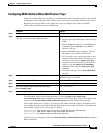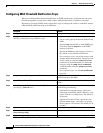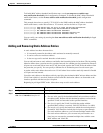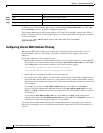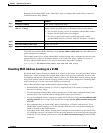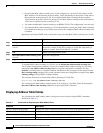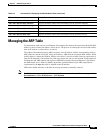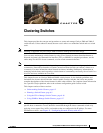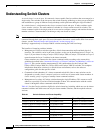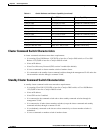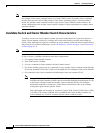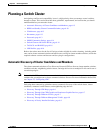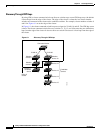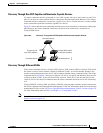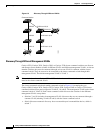
CHAPTER
6-1
Catalyst 2960 and 2960-S Switch Software Configuration Guide
OL-8603-09
6
Clustering Switches
This chapter provides the concepts and procedures to create and manage Catalyst 2960 and 2960-S
switch clusters. Unless otherwise noted, the term switch refers to a standalone switch and to a switch
stack.
Note Stacking is supported only on Catalyst 2960-S switches running the LAN base image.
You can create and manage switch clusters by using Cisco Network Assistant (hereafter known as
Network Assistant), the command-line interface (CLI), or SNMP. For complete procedures, see the
online help. For the CLI cluster commands, see the switch command reference.
Note Network Assistant supports switch clusters, but we recommend that you instead group switches into
communities. Network Assistant has a Cluster Conversion Wizard to help you convert a cluster to a
community. For more information about Network Assistant, including introductory information on
managing switch clusters and converting a switch cluster to a community, see Getting Started with Cisco
Network Assistant, available on Cisco.com.
This chapter focuses on Catalyst 2960 and 2960-S switch clusters. It also includes guidelines and
limitations for clusters mixed with other cluster-capable Catalyst switches, but it does not provide
complete descriptions of the cluster features for these other switches. For complete cluster information
for a specific Catalyst platform, refer to the software configuration guide for that switch.
This chapter consists of these sections:
• Understanding Switch Clusters, page 6-2
• Planning a Switch Cluster, page 6-5
• Using the CLI to Manage Switch Clusters, page 6-16
• Using SNMP to Manage Switch Clusters, page 6-17
Note We do not recommend using the ip http access-class global configuration command to limit access to
specific hosts or networks. Access should be controlled through the cluster command switch or by
applying access control lists (ACLs) on interfaces that are configured with IP address. For more
information on ACLs, see Chapter 31, “Configuring Network Security with ACLs.”.



